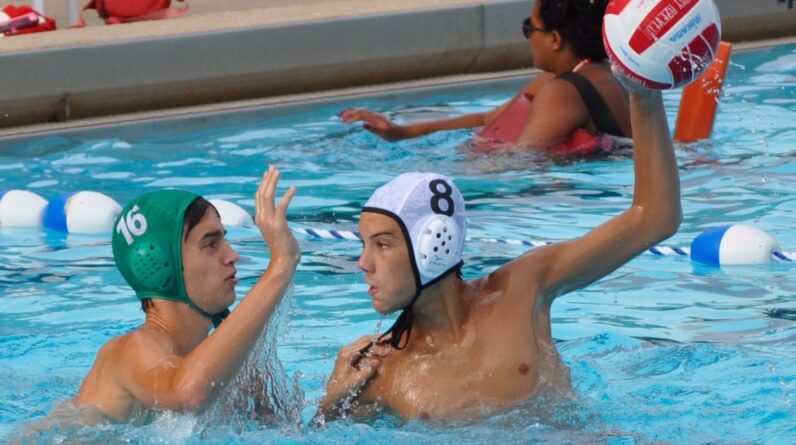
Are you a water polo player concerned about your safety in the pool? Look no further, because this article will provide you with essential safety precautions to ensure your well-being during water polo. From wearing proper protective gear to staying hydrated, this guide will equip you with the knowledge and tips you need to stay safe and enjoy your time in the water. So dive in and let’s explore the important safety precautions for water polo players together!
Protective Gear
Water Polo Caps
When participating in water polo, one of the most essential pieces of protective gear is the water polo cap. These caps are made of a durable material that helps protect your head from potential injuries during the game. Not only do they provide physical protection, but they also serve the purpose of distinguishing between teams. The caps come in different colors, with one team wearing dark caps and the other wearing light ones. This helps players easily identify their teammates and opponents in the midst of the fast-paced and sometimes chaotic game.
Mouthguards
Another crucial piece of protective gear for water polo players is the mouthguard. Given the physical nature of the sport, collisions and accidental contact are common occurrences. Wearing a mouthguard helps protect your teeth, gums, and jaw from potential injuries. It is recommended to use a custom-fitted mouthguard to ensure maximum protection and comfort. Investing in this simple piece of gear can prevent serious dental injuries and the need for extensive dental work.
Goggles
While not as commonly used as in other water-based sports, goggles can provide added protection for your eyes when playing water polo. They can shield your eyes from splashes, accidental pokes, or the impact of the ball. Additionally, goggles can enhance your vision and help you maintain focus on the game by reducing the glare caused by the water and the bright lights in indoor pool facilities. Opt for goggles specifically designed for water sports to ensure they stay securely in place during the intense movements of the game.
Ear Guards
In water polo, the risk of getting the ears injured is high due to the physical contact and potential water pressure. Thus, wearing ear guards is essential to protect your ears from trauma. These guards are designed to cover and cushion the ears, reducing the chances of ear injuries such as cauliflower ear. Additionally, they can help prevent water from entering the ear canal, which can cause discomfort and even lead to infections. Incorporating ear guards into your protective gear ensures your ears stay safe and healthy throughout the game.
Warm-up and Stretching
Importance of Warm-up
Whether it’s a practice session or a competitive match, warming up before water polo is crucial to prepare your body for the intense physical demands of the sport. Warm-up exercises increase your heart rate and body temperature, helping you loosen up your muscles, improve joint mobility, and enhance your overall performance. Moreover, a proper warm-up routine can minimize the risk of potential injuries, as it prepares your muscles, tendons, and ligaments for the challenges ahead. Always prioritize warm-up exercises to optimize your physical readiness and prevent avoidable injuries.
Dynamic Stretching
As part of your warm-up routine, incorporating dynamic stretching exercises is highly beneficial for water polo players. Dynamic stretching involves active movements that mimic the motions used during the game. These exercises help improve flexibility, increase blood flow to the muscles, and enhance your range of motion. Examples of dynamic stretches for water polo include arm swings, leg swings, torso rotations, high knees, and lunges with twists. By incorporating dynamic stretching into your warm-up, you can enhance your overall performance and decrease the risk of muscle strains and joint injuries.
Specific Water Polo Warm-up Exercises
To further enhance your warm-up routine, including specific water polo warm-up exercises can be highly effective. These exercises are designed to mimic the specific movements and skills required in water polo, helping you mentally and physically prepare for the game. Some examples of specific water polo warm-up exercises include eggbeater kicks, passing drills, shooting practice, and swimming sprints. Not only do these exercises enhance your physical readiness, but they also improve your teamwork, coordination, and cognitive focus. Incorporating these exercises into your warm-up routine will help you hit the pool fully prepared for the challenges ahead.
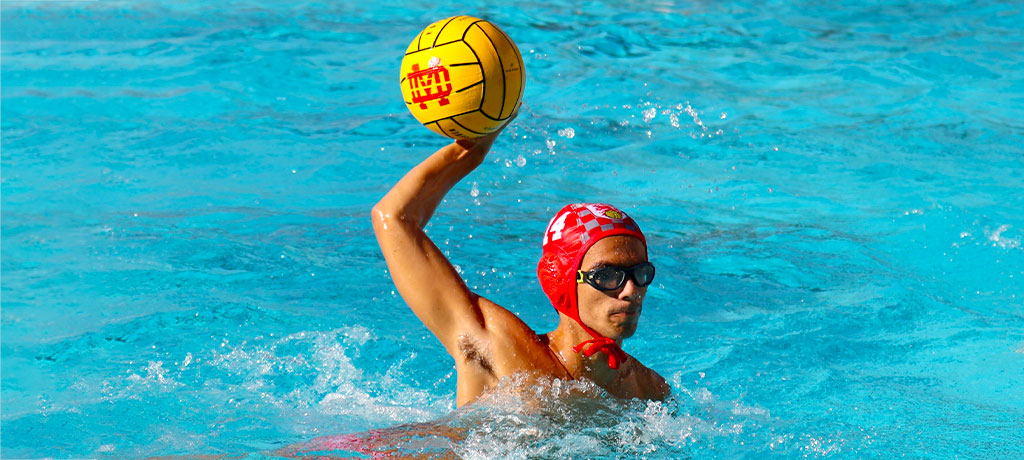
This image is property of cdn.shopify.com.
Proper Technique
Body Positioning
One of the fundamental aspects of water polo is maintaining proper body positioning in the water. Achieving and maintaining a good body position allows you to move efficiently, defend effectively, and execute powerful shots. To maintain a strong body position, keep your hips high in the water, engage your core muscles, and maintain a slightly forward-leaning posture. This positioning allows you to maximize your balance and stability while maneuvering through the water. Practice body positioning drills during training sessions to improve your technique and enhance your overall game performance.
Passing and Shooting Technique
Mastering proper passing and shooting techniques in water polo is key to effectively contributing to your team’s offense. When passing, focus on using your core and leg muscles to generate power and accuracy. Maintain a stable body position and use a quick, strong arm motion to propel the ball towards your teammate. When shooting, emphasize leg drive, wrist snap, and an explosive upper body motion to generate maximum power and precision. Regularly practicing passing and shooting drills will help you refine your technique, speed up your decision-making, and contribute significantly to your team’s success.
Defensive Techniques
In water polo, solid defensive skills are essential for preventing the opposing team from scoring. Effective defensive techniques involve maintaining a strong body position, using your arms and legs to block shots, and employing active hands to disrupt passing lanes. Staying aware of the opposing players’ movements and predicting their actions will allow you to anticipate and intercept passes. Additionally, learning proper defensive positioning, such as fronting the opponent or playing zone defense, can greatly enhance your effectiveness as a defender. Regularly practicing defensive drills and honing your defensive skills will make you a valuable asset to your team’s defensive strategy.
Goalkeeping Techniques
As the last line of defense, goalkeepers play a crucial role in water polo. Proper goalkeeping techniques involve a combination of agility, reflexes, positioning, and anticipation. Learn to read the game and react quickly to shots, employing a variety of saves such as the block, deflect, or controlled tip. Maintaining a strong body position and using explosive leg movements to cover the goal will help you effectively block shots. Regularly practicing goalkeeping drills and working closely with your team’s coach or goalkeeper coach will allow you to refine your technique, enhance your decision-making, and become a reliable goalkeeper for your team.
Conditioning and Fitness
Cardiovascular Fitness
To excel in water polo, having a strong cardiovascular system is essential. The sport requires continuous swimming, explosive bursts of speed, and the ability to recover quickly. Engage in cardiovascular exercises such as swimming laps, interval training, and other forms of aerobic exercises to improve your cardiovascular fitness. By training your heart and lungs, you will enhance your endurance, increase your stamina, and be equipped to perform at your best throughout the game.
Strength Training
To meet the physical demands of water polo, incorporating strength training into your workout routine is crucial. Focus on exercises that target the major muscle groups utilized in water polo, including the legs, core, upper body, and shoulders. Exercises such as squats, lunges, push-ups, pull-ups, and shoulder presses are effective for building strength and power. Be sure to maintain proper form and gradually increase the weight and intensity of your workouts over time. Regular strength training sessions will enhance your swimming power, shooting ability, and overall performance in the water.
Endurance Training
Water polo matches can be physically demanding and lengthy, often lasting several quarters with minimal rest. Endurance training is key to maintaining a high level of performance throughout the game. Incorporate exercises such as long-distance swimming, tread water sessions, and interval training to improve your endurance and stamina. Gradually increase the duration and intensity of your training sessions to build up your endurance capacity over time. Building your endurance will allow you to sustain your speed, explosiveness, and sharpness throughout the entire match.
Flexibility Training
Maintaining good flexibility is important for preventing injuries and improving your agility and range of motion in water polo. Regularly incorporating stretching exercises into your training routine can help you develop and maintain flexibility. Focus on stretching the major muscle groups such as the quadriceps, hamstrings, hip flexors, chest, and shoulders. Additionally, including exercises that improve your rotational flexibility and mobility of the spine can greatly enhance your performance in various water polo movements. Aim to stretch after each training session and engage in activities such as yoga or Pilates to further improve your flexibility.
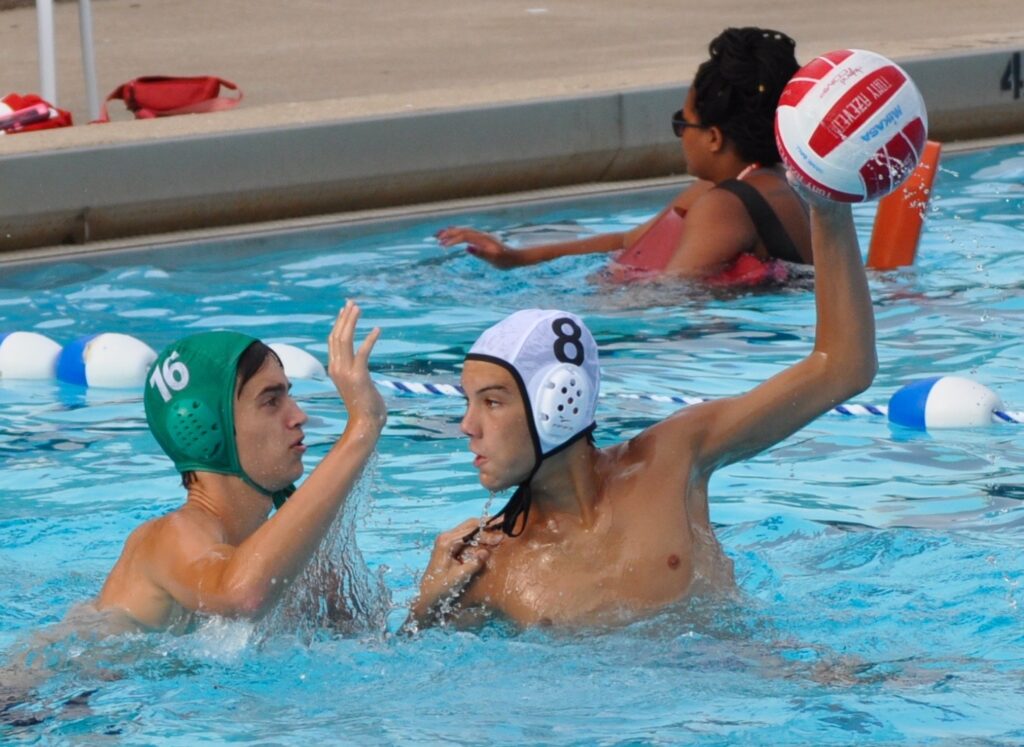
This image is property of carolinawaterpolo.com.
Hydration and Nutrition
Importance of Hydration
Staying properly hydrated is vital for water polo players to perform at their best and maintain their overall health. During training sessions and games, the body loses significant amounts of water through sweat and respiration. It’s important to drink water regularly before, during, and after exercise to replenish these lost fluids. Dehydration can negatively impact your performance, lead to muscle cramps, and increase the risk of heat-related illnesses. Carry a water bottle with you at all times and aim to drink at least eight glasses of water per day to ensure adequate hydration.
Pre-game and Post-game Nutrition
Proper nutrition is essential for fueling your body before and after water polo matches or training sessions. Pre-game meals should consist of carbohydrates for energy, as well as adequate protein for muscle repair and recovery. Opt for whole grain carbohydrates such as brown rice or whole wheat pasta, lean sources of protein like chicken or fish, and incorporate plenty of fruits and vegetables. After the game or training session, focus on replenishing your energy stores with a balanced meal that includes carbohydrates, protein, and healthy fats. Proper nutrition plays a vital role in maximizing your performance and promoting your overall health as a water polo player.
Proper Fueling Strategies
In addition to maintaining a healthy diet, incorporating proper fueling strategies into your routine can further enhance your performance. Before a game or training session, aim to consume a meal or snack that is rich in carbohydrates a few hours beforehand to top up your energy stores. During longer matches or intense training sessions, consider consuming sports drinks or energy gels to provide quick energy and replenish electrolytes. After intense exercise, prioritize consuming a combination of carbohydrates and protein within the first 30 minutes to aid in muscle recovery and glycogen replenishment. Experiment with different fueling strategies during training to find what works best for your body and maximizes your performance.
Awareness of Surroundings
Checking for Hazards
Being aware of your surroundings is crucial for your safety in water polo. Before entering the pool or during breaks, always check for any hazards that could potentially cause injury. Look out for any sharp edges, slippery surfaces, or loose objects on the pool deck. Additionally, be mindful of other swimmers, especially during crowded practice sessions. Reporting any hazards or potential dangers to the appropriate authority is important in creating a safe environment for everyone involved.
Water Depth
Water depth is a critical aspect to consider when playing water polo. Familiarize yourself with the pool’s depth, especially in the area where you will be competing or practicing. Shallow areas can pose a risk of injuries, particularly during rapid movements or falling. It’s important to be cautious and avoid diving or jumping into the water in shallow areas. Developing an understanding of the pool’s layout and potential shallow spots will help you navigate the pool safely and prevent unnecessary injuries.
Avoidance of Collision
Water polo is a contact sport, and collisions between players can occur during the game. However, there are steps you can take to minimize the risks of collisions and reduce the chances of injury. Always be aware of the position and movements of other players, both on your team and the opposing team. Maintain good communication with your teammates, using verbal cues or hand signals to avoid collisions. Focus on your positioning and be mindful of your surroundings at all times. By practicing good situational awareness and actively avoiding collisions, you can significantly reduce the risk of injury to yourself and others.
Communication with Teammates
Clear and effective communication is essential in water polo to ensure smooth gameplay and prevent accidents. Verbally communicating with your teammates is vital, especially during fast-paced situations or when planning strategies. Develop hand signals and establish non-verbal communication methods to relay important information to your teammates quickly and efficiently. Additionally, maintaining open lines of communication with your teammates allows you to anticipate their movements and make split-second decisions without the risk of collisions or misunderstandings.
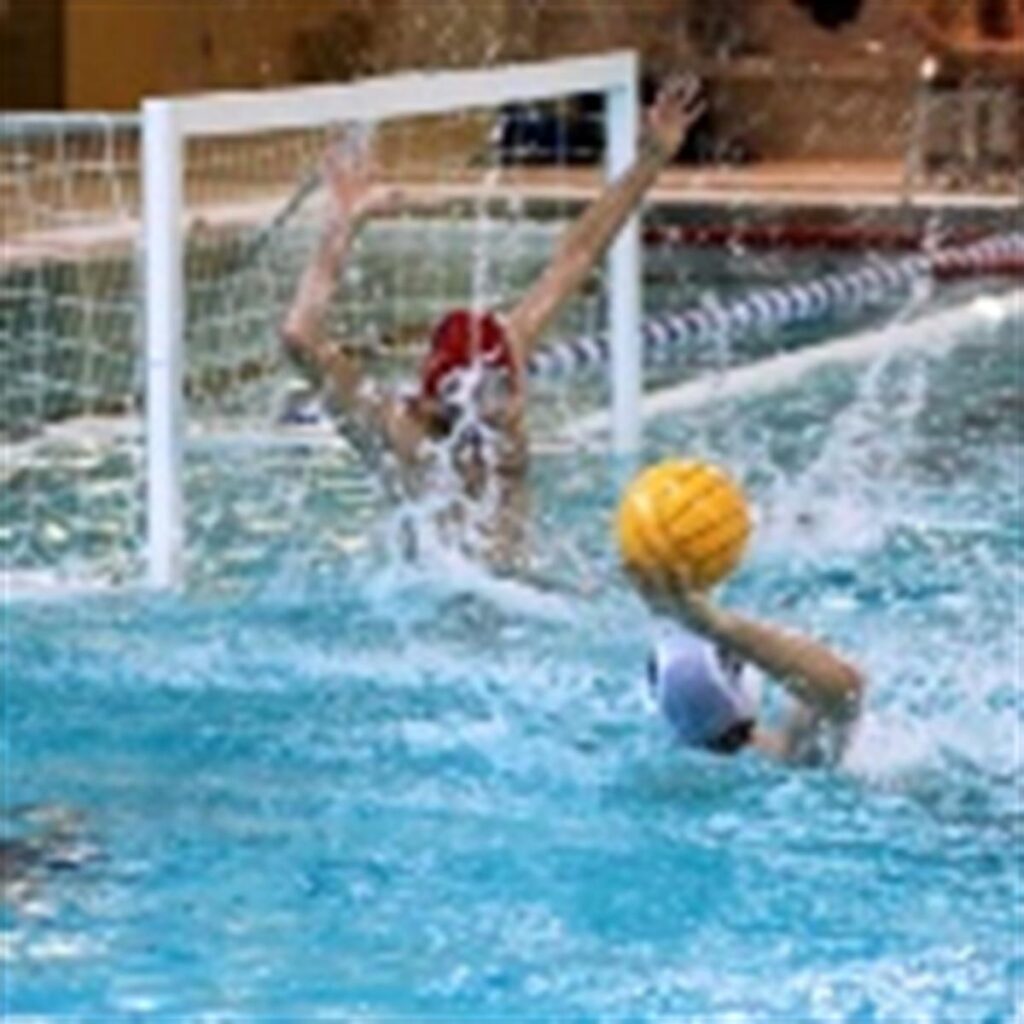
This image is property of www.healthychildren.org.
Emergency Preparedness
Knowledge of Basic First Aid
Having a basic understanding of first aid procedures is essential for any athlete, including water polo players. Enroll in a first aid course to learn how to respond to common injuries such as sprains, strains, cuts, and bruises. Understanding how to properly immobilize an injured limb, apply basic wound care, and administer CPR can make a significant difference in the event of an emergency. Regularly reviewing and practicing first aid techniques will ensure you are prepared to assist yourself or others in case of an injury.
CPR Certification
Water polo is a sport that involves being in and around water, making CPR certification particularly important. CPR, or cardiopulmonary resuscitation, is a life-saving technique used to revive someone who has experienced cardiac arrest. Obtain CPR certification from a reputable provider to learn the proper techniques and protocols. Having CPR certification will ensure that you are equipped with the skills needed to respond effectively in case of a sudden cardiac event or other life-threatening situations. Encourage your teammates and coaches to also obtain CPR certification, as it contributes to a safer environment for everyone involved in water polo.
Emergency Action Plan
Being prepared for emergencies is crucial for the safety of all water polo players. Develop an emergency action plan in collaboration with your coaches, trainers, and facility personnel. This plan should outline the steps to be taken in case of different emergency scenarios, such as injuries, inclement weather, or pool facility issues. Communicate and practice the emergency action plan with your team regularly to ensure everyone knows their roles and responsibilities. Regular drills and rehearsals can help familiarize all individuals involved with the necessary procedures, enabling faster and more effective responses during emergencies.
Communication with Coaches and Trainers
Maintaining open and clear communication with your coaches and trainers is essential for your safety in water polo. Inform them of any pre-existing medical conditions, allergies, or injuries that may affect your participation or require special attention. Additionally, communicate any concerns you have regarding safety or any incidents that occur during practices or games. Establishing a strong line of communication with your coaches and trainers ensures that they are aware of your specific needs and can provide appropriate support and guidance.
Game Rules and Referee Signals
Understanding Game Rules
Knowledge of water polo rules is crucial for a fair and safe game. Familiarize yourself with the specific rules and regulations set by the governing body of the sport in your country. Understand the boundaries, scoring system, infractions, and common penalties. By having a strong understanding of the rules, you can play the game safely, make informed decisions, and avoid unnecessary penalties or injuries. Regularly review the rules and seek clarification from your coaches or umpires if you have any doubts or questions.
Familiarity with Referee Signals
Referee signals are used to communicate important decisions, fouls, and game situations to the players. Familiarize yourself with the commonly used referee signals in water polo to ensure you can quickly interpret and respond accordingly. Referee signals indicate events such as a goal, exclusion foul, ordinary foul, timeout, or exclusion of a player. Understanding and responding to these signals promptly and correctly is crucial for maintaining the flow of the game and avoiding unnecessary penalties.
Adherence to Fair Play
Water polo, like any sport, relies on fair play and sportsmanship. Respect your opponents, the referees, and the integrity of the game. Avoid engaging in unsportsmanlike conduct, such as deliberate aggression, verbal abuse, or cheating. Maintain control of your emotions and frustrations throughout the game. Focus on playing to the best of your abilities while adhering to the rules and principles of fair play. By prioritizing fair play, you contribute to a positive and safe environment for everyone involved in water polo.
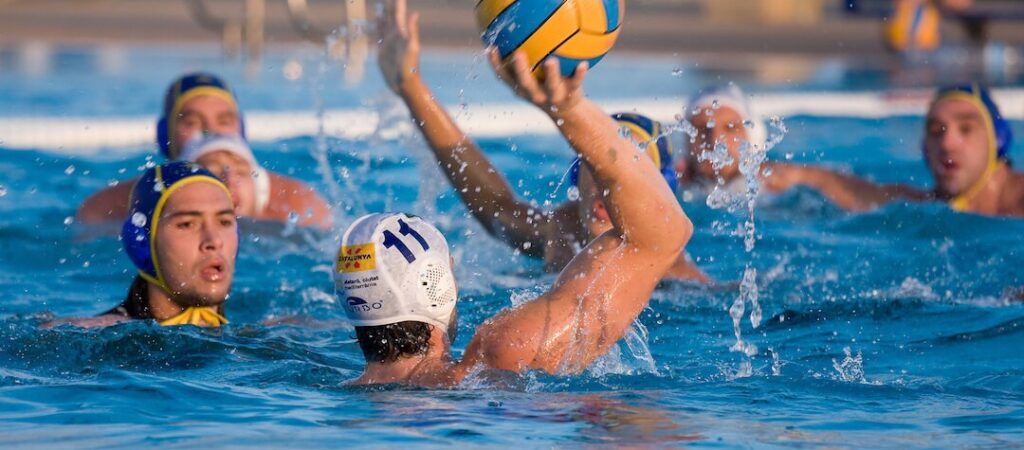
This image is property of d32ydbgkw6ghe6.cloudfront.net.
Match and Practice Environment
Quality of Pool Facility
Playing in a well-maintained pool facility is crucial for the safety of water polo players. The pool should be regularly cleaned and properly maintained to prevent the growth of bacteria and other pathogens. Additionally, the pool surface should be free from sharp edges, loose tiles, or other hazards that could cause injuries. Pay attention to the overall cleanliness and condition of the pool facility to ensure a safe and hygienic playing environment.
Water Temperature and Clarity
Maintaining appropriate water temperature and clarity is important for the comfort and safety of water polo players. Water that is too cold can cause muscle cramps and negatively impact performance, while excessively warm water can lead to dehydration and overheating. Ensure that the pool’s water temperature is within a comfortable range for players. Additionally, the water should be clear and free from any contaminants or chemicals that could irritate the skin, eyes, or respiratory system. Regular water testing and maintenance by qualified professionals will help monitor and maintain suitable water conditions.
Pool Deck Safety
The pool deck is an area where water polo players often gather during breaks or after practices and games. It’s important to prioritize pool deck safety to avoid accidents or injuries. Ensure that the deck surface is slip-resistant, well-maintained, and free from any obstacles or debris that could cause slips or falls. Adequate lighting should be provided to ensure proper visibility, especially during evening practices or games. Promoting and enforcing safe behavior, such as no running and no diving in non-designated areas, is vital to preventing accidents on the pool deck.
Proper Lighting and Visibility
Proper lighting in both indoor and outdoor pool facilities is essential for maintaining visibility during water polo matches and practices. Inadequate lighting can hinder players’ ability to see and react effectively, potentially leading to collisions or other accidents. Ensure that the pool area is well-lit, both above and below the water, to provide clear visibility for all participants. Regularly maintain and replace faulty bulbs or fixtures to prevent any disruption to visibility during training or competitive matches.
Injury Prevention
Proper Warm-up and Cool-down
Properly warming up and cooling down before and after water polo activities is crucial for injury prevention. Warm-up exercises prepare your body for the demands of the sport and increase blood flow, flexibility, and muscle temperature. Cooling down exercises help gradually lower your heart rate and prevent post-exercise muscle soreness. By incorporating warm-up and cool-down routines into your training sessions or matches, you can reduce the risk of muscle strains, sprains, and other injuries.
Rest and Recovery
Rest and recovery play a vital role in injury prevention for water polo players. Ensure that you get adequate sleep and rest between practices and matches to allow your body to recover and repair itself. Overtraining and insufficient rest can lead to fatigue, decreased performance, and an increased risk of injury. Listen to your body’s signals and take appropriate rest days to prevent the onset of overuse injuries. Incorporating recovery strategies such as foam rolling, stretching, or massage therapy can also aid in the prevention of injuries and promote optimal performance.
Recognizing Overuse Injuries
Water polo involves repetitive movements and high-intensity training, which can lead to overuse injuries. It’s important to recognize the signs and symptoms of overuse injuries, such as persistent pain, swelling, or decreased range of motion. If you experience any of these symptoms, consult with a healthcare professional to receive a proper diagnosis and treatment plan. Ignoring or playing through overuse injuries can exacerbate the condition and lead to more serious complications. Early recognition and appropriate management of overuse injuries are crucial for a safe and sustainable water polo experience.
Avoidance of Dangerous Play
Engaging in dangerous play, such as intentional aggressive actions or excessively rough tactics, not only poses a risk to opponents but also increases the likelihood of injuries for all involved. Respect the safety and well-being of yourself and others by avoiding dangerous play and focusing on fair, technical, and disciplined gameplay. Prioritize skill development, teamwork, and strategic tactics over aggressive physicality. By adhering to the principles of fair play and safety, you contribute to a positive and respectful water polo environment for everyone involved.
In summary, participating in water polo requires careful consideration of safety precautions to ensure a positive and injury-free experience. The use of protective gear such as water polo caps, mouthguards, goggles, and ear guards is essential in minimizing the risk of head, dental, and ear injuries. Prioritizing warm-up and stretching exercises, mastering proper technique, and maintaining optimal conditioning and fitness levels are key to maximizing performance and minimizing the risk of injuries. Staying hydrated, maintaining a balanced nutrition plan, and being aware of your surroundings contribute to a safe and healthy water polo experience. Equipping yourself with basic first aid knowledge, CPR certification, and an emergency action plan prepares you for any unforeseen circumstances. Familiarizing yourself with game rules, referee signals, and maintaining a safe match and practice environment promote fair play and minimize injury risks. Finally, incorporating injury prevention strategies, recognizing overuse injuries, and avoiding dangerous play ensure a long and enjoyable water polo journey. By following these comprehensive safety measures, you can fully enjoy the excitement and challenges of water polo while keeping yourself and others safe.
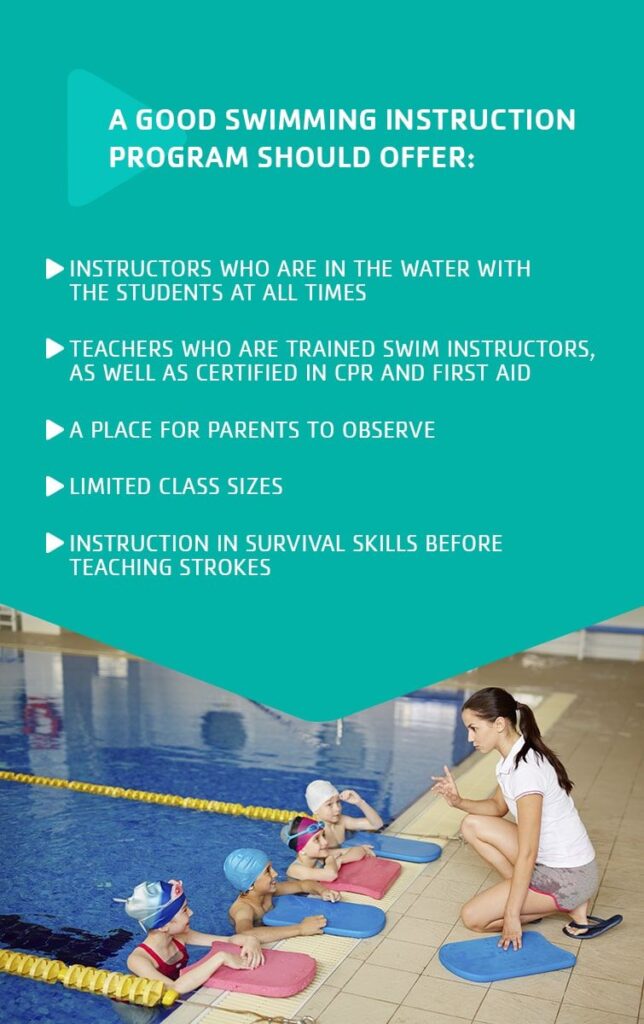
This image is property of gwrymca.org.






